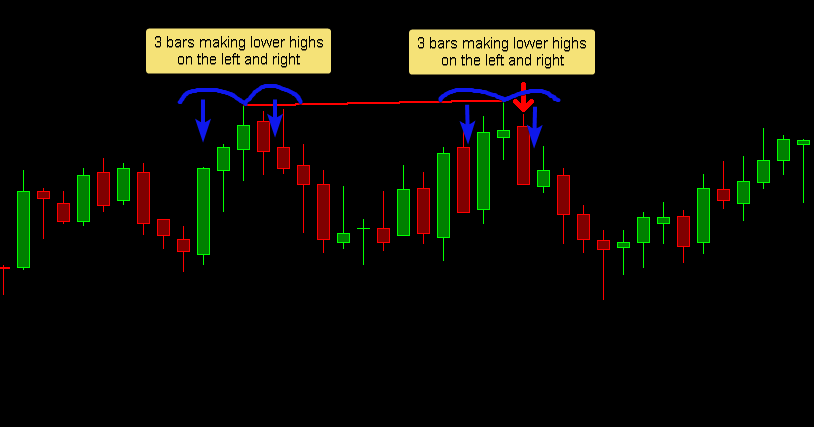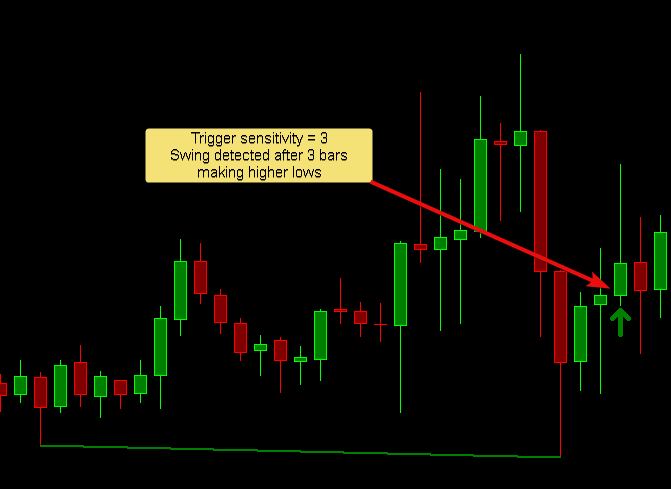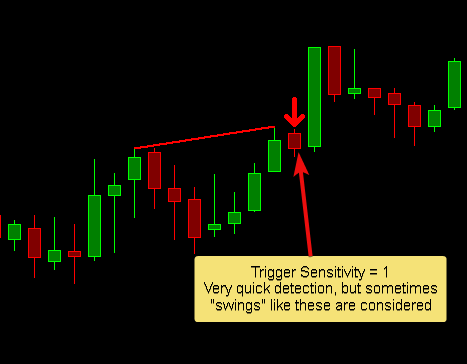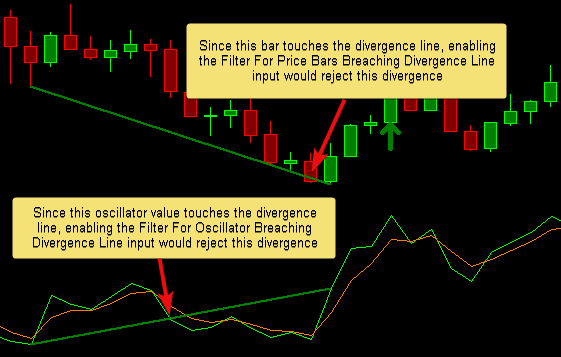| Input name | Description |
|---|
| Bullish Divergence Price Reference | Reference to the input data for detecting Swing Lows |
| Bearish Divergence Price Reference | Reference to the input data for detecting Swing Highs |
| Oscillator Reference | Reference to the subgraph we want to detect divergence with |
| Draw Divergence Lines | Select whether to draw the actual divergence lines on the main price panel and/or the oscillator region |
| Oscillator Graph Region | The graph region of the oscillator |
| Swing Sensitivity | Number of bars sensitivity for detecting swings (see Sensitivity Settings) |
| Trigger Sensitivity | Number of bars sensitivity on the right side of the 2nd peak (see Early Detection) |
| On Bar close | Should the divergence be detected on bar close or intrabar |
| Divergence Signal Visual Offset (in Ticks) | Visual offset in ticks from the bar of the arrow marking divergence detection |
| Divergence Types to Detect | Select whether Regular and/or Hidden Divergence types are detected |
| Oscillator Pivot Alignment Enabled | When enabled and a price swing is detected, the study will look back for a swing in the oscillator to use for divergence detection. If no swing is found then the study will not look for divergence. |
| Oscillator Pivot Alignment Lookback | Amount of bars to look back in the oscillator for a swing. |
| Bullish Divergence Line Color | Color for lines drawn for Bullish Divergence |
| Bearish Divergence Line Color | Color for lines drawn for Bearish Divergence |
| Divergence Line Width | Width of lines drawn for Divergence |
Filter For Price Bars Breaching Divergence Line | Select to filter out price bars that breach the divergence line either with their closing value or any value in-between high and low (see Bars/Oscillator Crossing Divergence Line) |
| Filter For Oscillator Breaching Divergence Line | Select to filter out oscillator values that breach the divergence line (see Bars/Oscillator Crossing Divergence Line) |
| Allow Divergence Line to Span Multiple Trading Sessions | Should divergences be allowed to span multiple trading sessions |
| Divergence Lookback Number of Peaks | Number of peaks to look through for divergence (see Divergence Lookback) |
| Divergence Lookback Use Nearest/Furthest Peak | Select whether to prefer the furthest or nearest diverting peak found in the lookback |
| Divergence Line Slope Filter Minimum Price Difference Units | Select whether to use difference in points or percentage when filtering out divergences that are too small |
| Divergence Line Slope Filter Minimum Price Difference | Minimum difference between two peaks to be considered for divergence |
| Divergence Line Filter Minimum Oscillator Difference | Minimum difference in points between two oscillator values to be considered for divergence |





